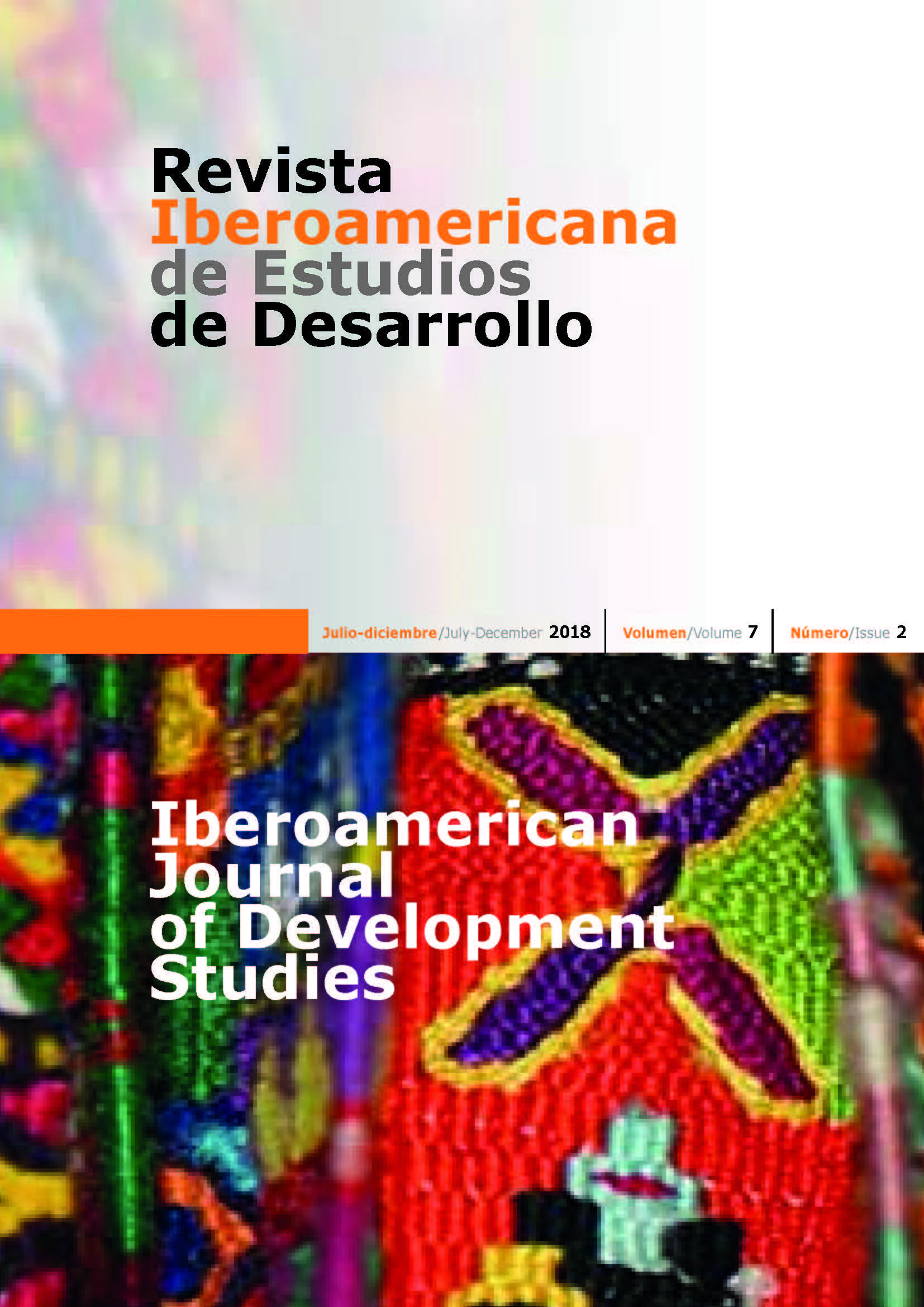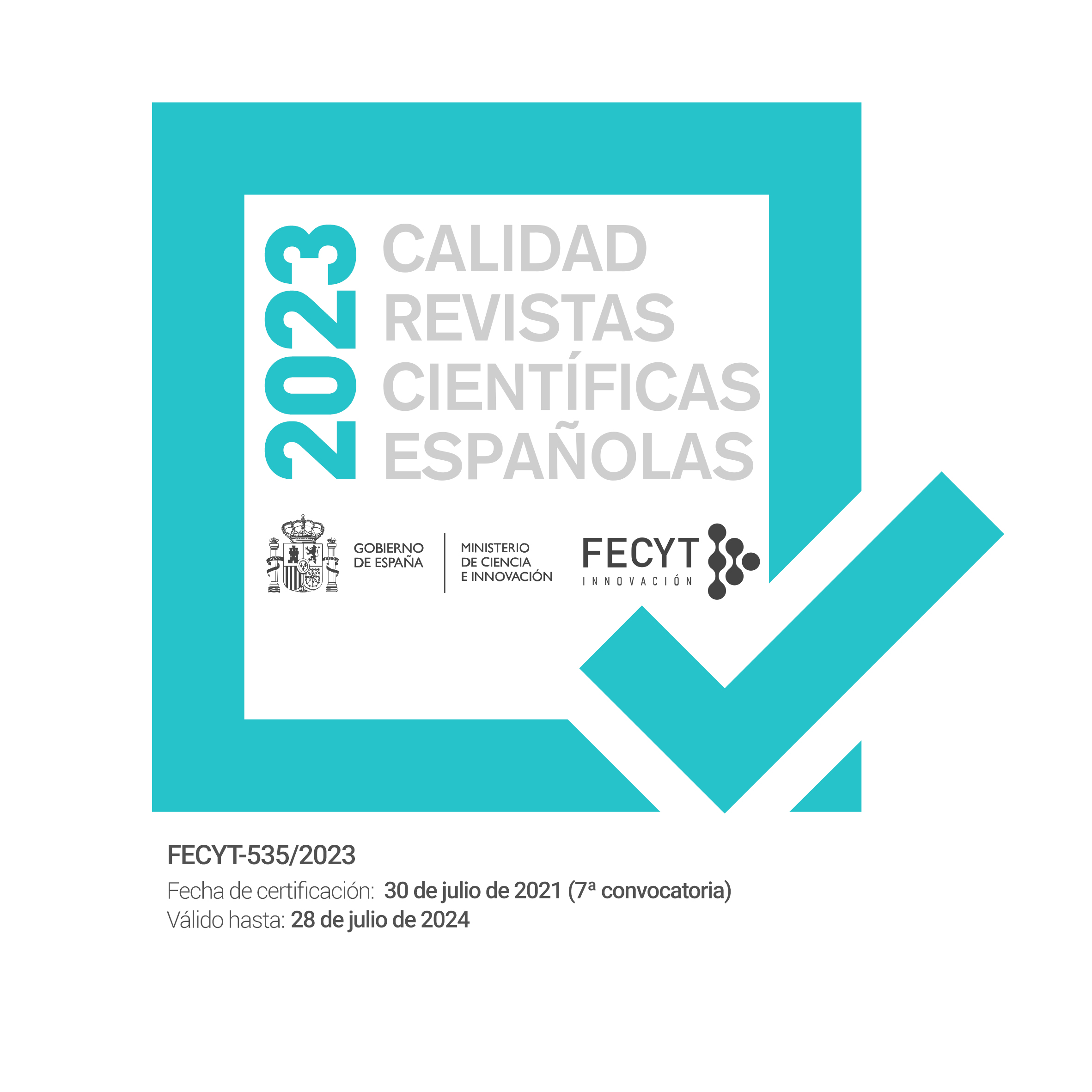Measuring resilience properties of household livelihoods and food security outcomes in the risky environments of Ethiopia
DOI:
https://doi.org/10.26754/ojs_ried/ijds.252Keywords:
Livelihood resilience, Resilience Theory, Portfolio Theory, Food security, EthiopiaAbstract
The purpose of this study is to contribute to efforts to measuring and assessing resilience properties of household livelihoods constructed in the risky environments. It provides new insights for assessing vulnerability of household livelihoods and designing resilience building programs in areas of protracted food crisis. Based on resilience theory as applied to social-ecological systems with an application of Modern Portfolio Theory, we adapted and measure the four properties of resilience to livelihood systems and tested the expected relationships between system properties as predicted by resilience theory. Household livelihood systems exhibited the expected pattern of increasing connectivity with increasing wealth (food income). Similarly, household resilience to food insecurity increases with increasing diversity of livelihood options and diversity declines with increasing connectivity of the system. This study confirms the key role of livelihood diversification for improving household resilience to food insecurity at both higher and lower wealth groups of households.
Downloads
References
ADGER WN (2000). Social and ecological resilience: are they related? Prog. Hum. Geogr. 24:347-364.
ALINOVI L, MANE E, ROMANO D (2009). Measuring household resilience to food insecurity: Application to Palestinian households. EC-FAO Food Secur. Programme Rom.
ALLISON HE, HOBBS RJ (2004). Resilience, adaptive capacity, and the lock-in trap of the western Australian agricultural region. Ecol. Soc. 9.
AMHARA DPFSPCO (2015). Food Security & Agricultural Assessment Report Meher 2015. Amhara National Regional State. Disaster Prevention and Food Security Programme Coordination Office, Early Warning and Response Process, Bahir Dar, Ethiopia.
BERHANU W, COLMAN D, FAYISSA B (2007). Diversification and livelihood sustainability in a semi-arid environment: A case study from southern Ethiopia. J. Dev. Stud. 43:871-889.
BERKES F, SEIXAS CS (2005). Building Resilience in Lagoon Social-Ecological Systems: A Local-level Perspective. Ecosystems 8:967-974. doi: https://doi.org/10.1007/s10021-005-0140-4.
BLOCK S, WEBB P (2001). The dynamics of livelihood diversification in post-famine Ethiopia. Food Policy 26:333-350.
BOFED (2015). The 2014/15 Budget Year Annual Statistical Bulletin. Bureau of Finance and Economic Development, Commission of Plan, Bahir Dar.
BOHENSKY E, LYNAM T (2005). Evaluating responses in complex adaptive systems: insights on water management from the Southern African Millennium Ecosystem Assessment (SAfMA). Ecol. Soc. 10, 11.
BOHLE H-G (1993). The geography of vulnerable food systems. Coping Vulnerability Crit. Case Stud. Food-Insecure People Places Freibg. Stud. Dev. Geogr. 1:15-29.
BRAUN J von, ROSEGRANT MW, PANDYA-LORCH R, COHEN MJ, CLINE SA (eds.) (2005). New risks and opportunities for food security: scenario analysis for 2015 and 2050, 2020 discussion paper. Internat. Food Policy Research Inst., Washington, DC.
CANALI M, SLAVIERO F (2010). Food insecurity and risk management of smallholder farming systems in Ethiopia, in: Ninth European IFSA Symposium. Vienna (Austria), pp. 4-7.
CARPENTER SR, WESTLEY F, TURNER MG (2005). Surrogates for Resilience of Social-Ecological Systems. Ecosystems 8:941-944. doi: https://doi.org/10.1007/s10021-005-0170-y .
CARPENTER S, WALKER B, ANDERIES JM, ABEL N (2001). From Metaphor to Measurement: Resilience of What to What? Ecosystems 4:765-781. doi: https://doi.org/10.1007/s10021-001-0045-9.
CARTER MR, LITTLE PD, MOGUES T, NEGATU W et al. (2004). Shocks, sensitivity and resilience: Tracking the economic impacts of environmental disaster on assets in Ethiopia and Honduras. BASIS Res. Program Poverty Inequal. Dev. Wash. DC US Agency Int. Dev.
DERCON S (2002). Income risk, coping strategies, and safety nets. World Bank Res. Obs. 17:141-166.
DERCON S, HODDINOTT J (2005). Livelihoods, growth, and links to market towns in 15 Ethiopian villages.
DRMFSS (2012). Woreda Disaster Risk Profiling Report for Tach Gayint District. Ministry of Agriculture and Rural Development, Disaster Risk Management & Food Security Sector, Addis Ababa.
FRANKENBERGER T, LANGWORTHY M, SPANGLER T, NELSON S, CAMPBELL J, NJOKA J (2012). Enhancing resilience to food security shocks. White Pap. Draft TANGO Int. Tucson.
FRASER ED, MABEE W, FIGGE F (2005). A framework for assessing the vulnerability of food systems to future shocks. Futures 37:465-479.
GUNDERSON LH, FOLKE C, JANSSEN M et al. (2006). Generating and fostering novelty. Ecol. Soc. 11, 50.
HOLDEN S, SHIFERAW B, PENDER J (2004). Non-farm income, household welfare, and sustainable land management in a less-favoured area in the Ethiopian highlands. Food Policy 29:369-392.
HOLLING CS (1973). Resilience and stability of ecological systems. Annual Review of Ecology and Systematics 4:1-23.
HOLLING CS (2001). Understanding the complexity of economic, ecological, and social systems. Ecosystems 4:390-405.
LE VALLĚ J-C, PROQUEST CO, CARLETON UNIVERSITY. DISSERTATION. GEOGRAPHY (2007). Achieving food security through food system resilience: the case of Belize. Ottawa.
LEMI A (2005). The dynamics of livelihood diversification in Ethiopia revisited: evidence from panel data. Available SSRN 817104.
LUERS AL, LOBELL DB, SKLAR LS, ADDAMS CL, MATSON PA (2003). A method for quantifying vulnerability, applied to the agricultural system of the Yaqui Valley, Mexico. Glob. Environ. Change 13:255-267. doi: https://doi.org/10.1016/S0959-3780(03)00054-2.
MANYENA SB (2006). The concept of resilience revisited. Disasters 30:434-450.
MARKOWITZ H (1952). Portfolio selection. J. Finance 7:77-91.
NIEHOF A (2010). Food, diversity, vulnerability and social change: Research findings from insular Southeast Asia, Mansholt Publication Series. Wageningen Academic Publishers, The Netherlands.
PERZ SGL (2005). The importance of household asset diversity for livelihood diversity and welfare among small farm colonists in the Amazon. J. Dev. Stud. 41:1193-1220. doi: https://doi.org/10.1080/00220380500170899 .
PINGALI P, ALINOVI L, SUTTON J (2005). Food security in complex emergencies: enhancing food system resilience. Disasters 29, S5-S24.
SEAMAN JA, SAWDON GE, ACIDRI J, PETTY C (2014). The Household Economy Approach. Managing the impact of climate change on poverty and food security in developing countries. Clim. Risk Manag. 4-5:59-68. doi: https://doi.org/10.1016/j.crm.2014.10.001.
SPEDDING CRW (1988). A systems approach to agriculture, in: An Introduction to Agricultural Systems. Springer, pp. 15-40.
TGWA (2014). District Basic Information Report for Development Planning. Tach Gayint Woreda Administration Office, Tach Gayint.
TINCANI LS (2012). Resilient Livelihoods: Adaptation, Food Security and Wild Foods in Rural Burkina Faso. School of Oriental and African Studies.
VAITLA B, TESFAY G, ROUNSEVILLE M, MAXWELL D (2012). Resilience and livelihoods change in Tigray, Ethiopia. Somerv. MA Tufts Univ. Feinstein Int. Cent.
WALKER B, GUNDERSON L, KINZIG A, FOLKE C, CARPENTER S, SCHULTZ L (2006). A handful of heuristics and some propositions for understanding resilience in social-ecological systems. Ecol. Soc. 11, 13.
WITT R, WAIBEL H (2009). Climate Risk and Farming Systems In Rural Cameroon. ResearchGate.
Downloads
Published
How to Cite
Issue
Section
License
Copyright (c) 2018 Tesfahun Asmamaw Kasie, Enyew Adgo Tsegaye, Antonio Grandío-Botella, Isabel Giménez-García

This work is licensed under a Creative Commons Attribution-NonCommercial-NoDerivatives 4.0 International License.








